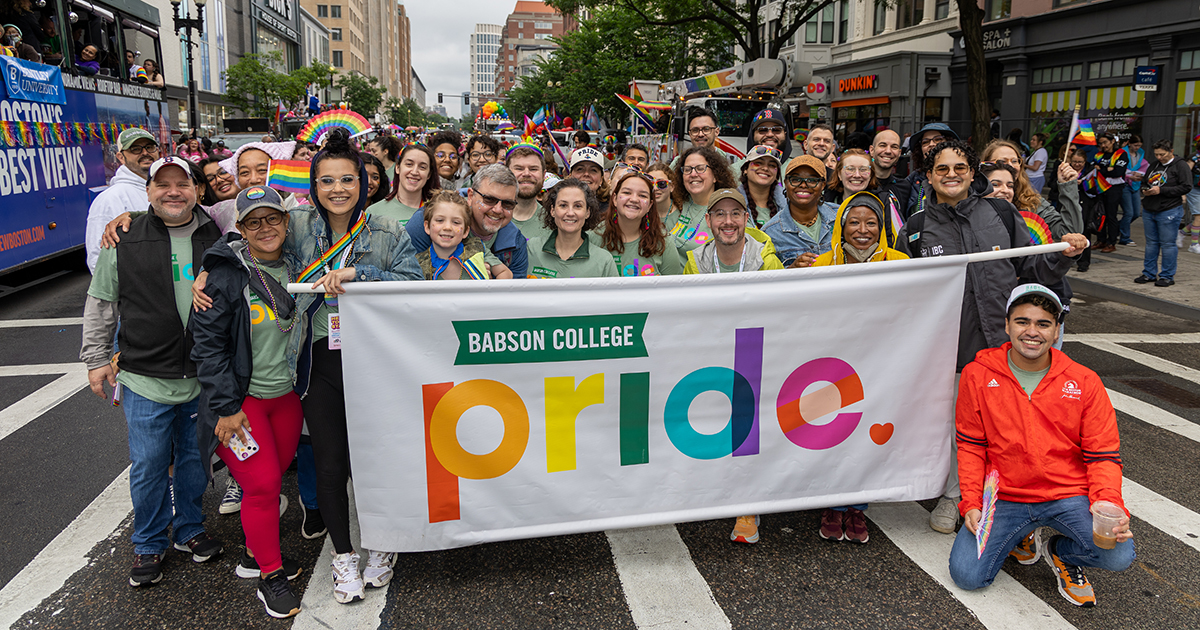How to Build a Personal Brand

If a brand is the way a company, organization, or individual is perceived by those who experience it, then what is a personal brand?
Jeff Bezos, founder of Amazon, has said, “Your brand is what people say about you when you’re not in the room.” But, for Karen Hebert-Maccaro, CEO of Babson Executive Education, that definition is too narrow. Personal brands, she says, are just as much about action as they are about words.
What is a Personal Brand?
“Your personal brand is what people ask of you, what people depend on you for,” said Hebert-Maccaro. “It’s the value your stakeholders see in you, and where you are uniquely distinctive.”
That personal brand can be cultivated, she says. And, in our rapidly changing world, that cultivation is more important than ever.
The economy is changing. Technology accelerates that change. Strong personal branding can help you stand out from the crowd in your career.
“People with strong professional brands are more noticeable, trusted, more prepared,” said Hebert-Maccaro. “By making a stronger argument for investing in yourself, you make a stronger argument to invest in you.”
Personal brand building requires deliberate strategy. Learn how to articulate your differentiators, set career goals, and develop an action plan for success »
That investment is important. The average half-life of a skill is 4.5 years, she says. Personal brand building not only being recognized for the skills you bring to the table, you’re also being trusted to learn and upskill. “Your stakeholders will trust that you get it done. That’s at the heart of a personal brand.”
How to Build a Personal Brand
Over her 20-year career spanning human resources, organizational design, learning and development, and executive coaching, Hebert-Maccaro has developed a tried and true framework for how to build a personal brand. That framework includes four key phases:
Discovery
When building a personal brand, many want to start with delivery. But, discovery, or self-awareness, is the crucial first step, says Hebert-Maccaro.
Discovery is about generating a heightened sense of self; knowing who you are and who is around you. A deep knowledge of your strengths and weaknesses, and ownership of those strengths and weaknesses, can set you apart, says Hebert-Maccaro. “When you know them in a felt way, meaning the knowledge of your self-awareness impacts your actions, you’re harnessing a rare and unique super power.”
On the path of discovery, seek out coaching and mentorship. Consider active journaling and daily reflections. Take feedback from a variety of self assessments and annual work reviews. Then, she says, put it all together. “Don’t look at them as individual pieces of data; find the trends. Those recurring themes are key to what you do well, and where you still need to improve.”
Differentiation
What is your distinct point of view? Differentiation is all about identifying and nurturing your unique ideas.
“Unique doesn’t have to be first of its kind,” said Hebert-Maccaro. “Unique is contextual. Something that hasn’t been done in your context, in your company, your team. That’s where you should shoot for differentiation.”
Design thinking is a useful process to find differentiation. “When you apply design thinking routinely to difficult challenges, it can help you identify new ideas and points of view that can consistently add value.”
Focus
We all start from somewhere. How are you harnessing your experience into what Hebert-Maccaro calls your “best narrative?”
“Your best narrative is one that showcases what makes you special,” she said. More detailed than an elevator pitch, a best narrative contains concrete examples. It can become a go-to story for interviews, introductions, and networking.
To find that narrative, she recommends starting by making a list of your great successes. Break down what you did and how you handled that success. Start with proof points and work backward. Then, hone and revise to make them distinctive. That, she says, is the beginning of a “really great narrative.”
Delivery
“Figure out how to tell your story,” advised Hebert-Maccaro. You’ve got to speak with confidence. Be compelling. Understand your audience. Then do the work necessary to understand your brand before delivering it.
“A well-rounded personal brand understands the importance of self-awareness, a cultivated point of view, and differentiated narrative before bringing the show on the road via delivery,” she said.
To master delivery, consider mastering the art of storytelling. Study influence, practice public speaking, and seek feedback. Volunteer for opportunities that put you front and center. “Delivery is about bringing your voice to the world; it’s not about what you say, it’s about the impact you have on others.”
Posted in Insights





